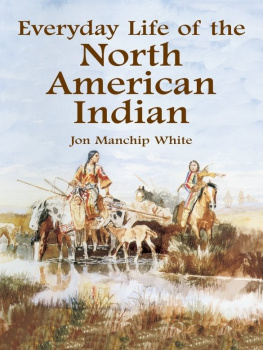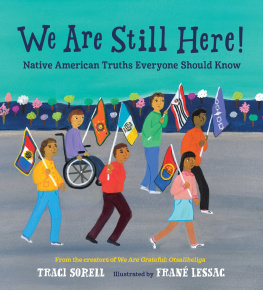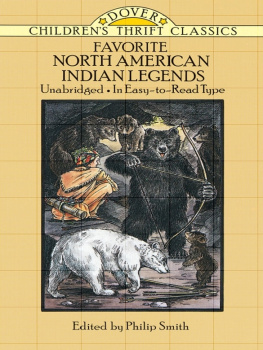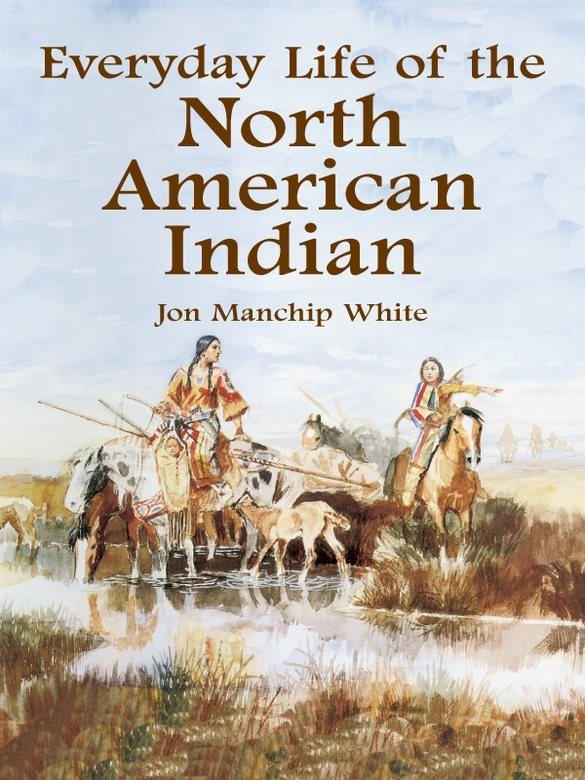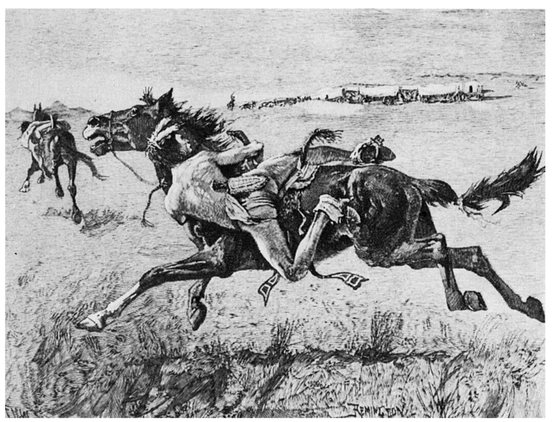The Author and Publishers wish to thank the following for their kind permission to reproduce the illustrations in this book: the Arizona State Museum, for figs 33, 75; figs 2, 3, 4, 5, 6, 20, 21, 22, 29, 50, 56, 63, 64, 76, 77, 78, 82, 85, 88 (all Photos by Helga Teiwes); fig. 9 (Photo by C. M. Wood); figs 80 and 83 (Photos by Tad Nichols); and figs 87 and 90 (Photos by L. F. H. Lowe); the British Museum, for figs 34 and 68; Cincinnatti Art Museum, for fig. 60; The Exhibit Museum, University of Michigan, for figs 7, 10, 13, 14, 32, 35, 37, 43, 44, 45; the Mansell Collection, for the frontispiece, and figs 25, 26, 36, 53, 54, 58, 62, 69, 73, 74, 91, 93, 97; Milwaukee Public Museum, for figs 11 and 12; the Northern Natural Gas Company Collection, Joselyn Art Museum, Omaha, Nebraska, for fig. 102; the Smithsonian Institution National Anthropological Archives, Bureau of American Ethnology Collection, for figs 27, 28, 70 and 104; Western Americana Picture Library, for figs 1, 8, 15, 16, 17, 18, 23, 24, 30, 31, 38, 39, 40, 41, 42, 46, 47, 48, 49, 51, 52, 55, 57, 59, 61, 65, 66, 67, 71, 72, 79, 81, 84, 86, 89, 92, 94, 95, 96, 98, 99, 100, 101, 103, 105, 106; and the Zoological Society of London, for figs 19 (a)-(e). The maps and figures were specially drawn by Alan R. Gunston. LSIA.
Bibliography
The following books are intended for the general reader. Specialized studies of individual tribes and culture areas are unfortunately too numerous to attempt a listing. For these, consult the bibliographies in the books below. All are published in New York unless otherwise indicated.
Alexander, Hartley Burr, The Worlds Rim, Great Mysteries of The North American Indian, University of Nebraska Press, Lincoln, Nebraska, 1935.
Association on Indian American Affairs, Inc., Indian Affairs and American Indian, Periodically published.
Brandon, William, The American Heritage Book of Indians, American Heritage Publishing Company, 1961.
Brophy, William A., and Aberle, Sophie D., The Indian, Americas Unfinished Business, University of Oklahoma Press, Norman, Oklahoma, 1966.
Collier, John, Indians of the Americas, W. W. Norton, 1947.
Driver, Harold E., Indians of North America, University of Chicago Press, Chicago, Illinois, 1961.
Eggan, F. (ed.), Social Organization of North American Tribes, University of Chicago Press, Chicago, Illinois, 1955.
Fitting, James E. (ed.), The Development of North American Archaeology, Anchor Books, Doubleday, 1973.
Folsom, Franklin, Americas Ancient Treasures, A Travel Guide to Archaeological Sites and Museums of Indian Lore, Rand McNally, 1974.
Hagan, William T., American Indians, University of Chicago Press, Chicago, Illinois, 1961.
Hassrick, Royal B., North American Indians, Octopus Books, London, 1974.
Highwater, Jamake (ed.), Fodors Guide to Indian America, David McKay, 1975.
Jennings, Jesse D., Prehistory of North America, McGraw Hill, 1974.
Josephy, Alvin M., Jr., The Indian Heritage of America, Alfred A. Knopf, 1968.
Josephy, Alvin M., Jr., The Patriot Chiefs, Viking Press, 1961.
Kroeber, A. L., Anthropology, Harcourt Brace, 1948.
Kroeber, Theodora, Ishi, University of California Press, Berkeley and Los Angeles, 1961.
La Farge, Oliver, A Pictorial History of the American Indian, Crown Publishers, 1956.
Marquis, Arnold, A Guide to Americas Indians: Ceremonials, Reservations and Museums, University of Oklahoma Press, Norman, Oklahoma, 1975.
Meggers, Betty J., Prehistoric America, Aldine Atherton, 1972.
Spencer, Robert F., and Jennings, Jesse D., The Native Americans, Harper & Row, 1965.
Steiner, Stan, The New Indians, Harper & Row, 1968.
Sterling, Mathew, Indians of the Americas, National Geographic Society, Washington, D.C., 1957.
Underhill, Ruth M., Red Mans America, University of Chicago Press, Chicago, Illinois, 1953.
U.S. Bureau of Indian Affairs, Where To Learn More About Indians, Government Printing Office, Washington, D.C., 1970.
White, Jon Manchip, A World Elsewhere, Thomas Y. Crowell, 1975.
Whiteford, Andrew Hunter, and Zim, Herbert S., North American Indian Arts, Golden Press, 1970.
Wissler, Clark, Indians of the United States, Revised edition by Lucy Wales Kluckhohn, Anchor Books, Doubleday, 1966.
The Spirits of The Ancestors
The Conestoga wagons creak and lumber across the prairie, their canvas flapping like a convoy of little ships labouring across an enormous empty ocean. The sun is just passing its zenith and beats down pitilessly. The trail-boss and his outriders urge on the teams of tired mules and their drivers; they must make the waterhole marked on their makeshift maps by nightfall. Suddenly the trail-boss stiffens in his saddle. He lifts his hand to his dust-streaked face and peers under it at the distant horizon. Where the edge of the vast plain meets the sky he can see a brown plume coiling into the air. Could that dim smudge be anything more than an ordinary dust-devil? No: this is Indian country. A moment later his ears catch the drumming of hoofs and the yelling of war-cries. Quickly he orders the toiling wagons to swing inwards and laager into a tight circle. Men leap out and pull down packing-casks, chests, trunks, even pieces of furniture, thrusting them beneath the wagons and into the gaps between to serve as a barricade. Winchesters and Navy Colts are snatched from their holsters and boxes of ammunition are broken open. The women crouch beside their menfolk, loading the spare weapons or huddling protectively above the children. None too soon. The first wild wave of horsemen is already breaking against the flimsy barrier. The men lying behind the upturned armchairs and chests of china and water-barrels fire into a blur of half-naked bodies daubed with paint and feathers. The air is filled with savage yells, with the crack of guns, with the reek of blood and sweat and gunpowder. Again and again the attackers return to the charge, leaving their dead draped across the barricade and the upturned shafts of the wagons. Finally they fall back on their traditional tactic of riding full tilt around the besieged band, yelping and yippying, guiding their bedizened steeds with their knees, twisting sideways to loose off their arrows and fire the rifles stolen from the victims of earlier massacres or sold to them by renegade white traders. The defenders squint grimly down the scorching barrels of their guns and pour fire into the maddened mass of the savages as they pound by, the manes and tails of their mounts and their own plaited locks and headdresses streaming out behind them. Bullets thud into bodies. Redskins topple to the ground to be trampled by their own comrades as they whirl past in a vortex of dust. The trail-boss is hit. His second-in-command snatches up his rifle and takes command. There can be no surrender, for the white men know that they can expect no quarter. They will be scalped, their wives and daughters will be seized as slaves and squaws, their children will be brought up in Indian ways. And now the arrows ripping into the wagons are tipped with fire and the tindery canvas burns with an oily flame. There is no alternative but to fight to the last, to sell their lives dearly...
1 Indians attacking a wagon train. After a painting by Frederic Remington.
Such is the portrait of American Indian activity with which we are familiar from watching a thousand movies. It is exciting and entertaining. But is it true? Does it really correspond to historical facts?

